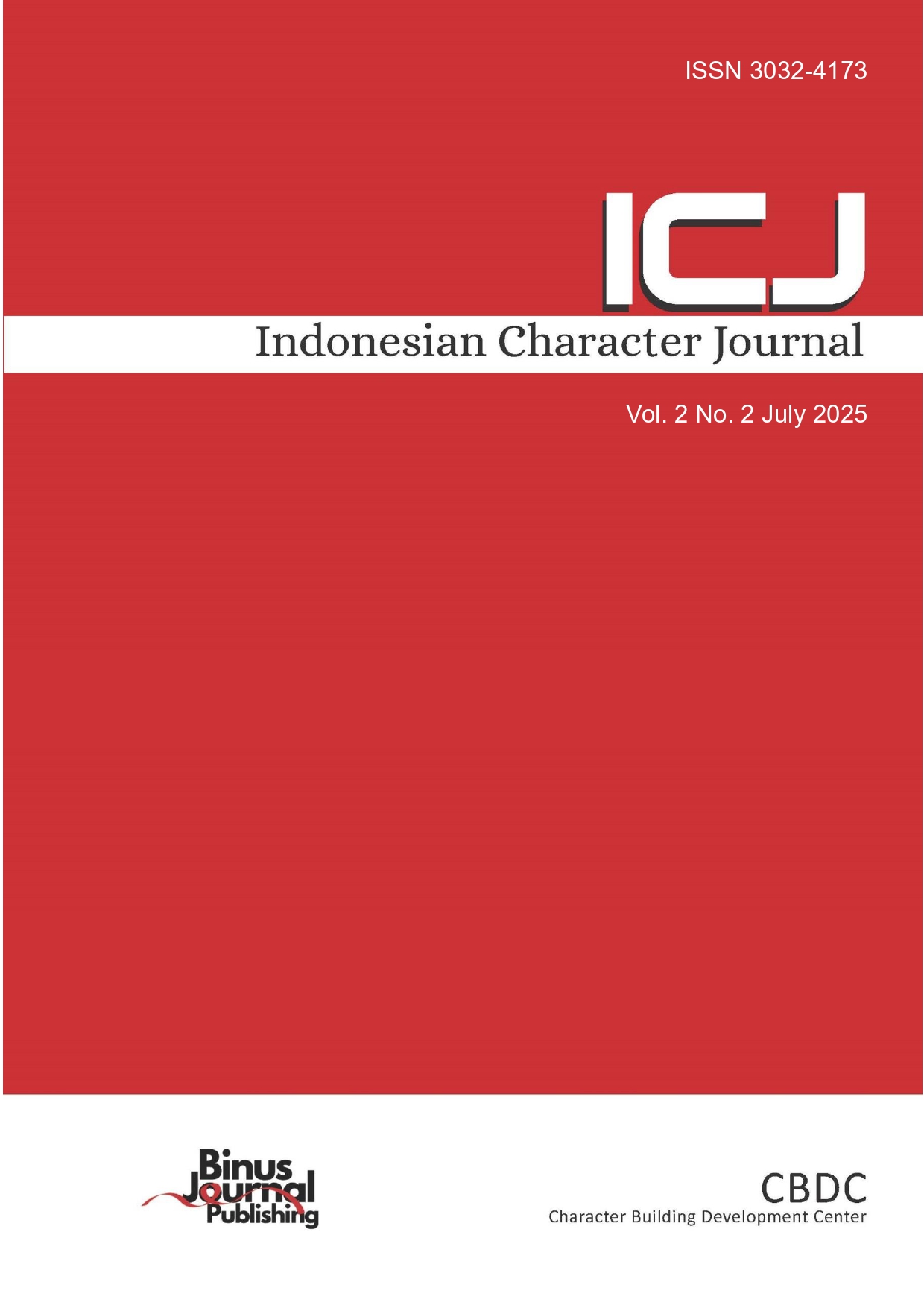Konsep Estetika Impresionisme dalam Pemikiran Henri Bergson
DOI:
https://doi.org/10.21512/icj.v2i2.11593Keywords:
Henri Bergson, aesthetics, perception, impressionismAbstract
Since the eye and the ability of perception have been recognized in painting techniques, especially in representational painting, questions have emerged regarding how an artist’s perception of reality can be transferred into a work of art. This transfer of the artist’s perception into the artwork can be found in the Impressionist movement. Impressionism is a major art movement that revolutionized not only painting tools but also painting techniques and the paradigm of reality in the eyes of painters. Impressionism focuses on how light can define a moment in time, with color providing definition rather than black lines. From this definition, it is evident that the transfer of an artist’s perception is influenced by moments in time. One philosopher who discusses the moment in time is Henri Bergson. This study focuses on how an artist’s perception of reality can be expressed in the form of artwork, particularly within the Impressionist movement. The main issue explored is how an artist's perception is understood and processed into a work of art, by examining the influence of experiences of time, light, and color on the creation process. This research aims to outline the discussion of perception in Henri Bergson’s theory, especially in Impressionist painting. The study finds that at the very least, memory images are at play when the painter's perception is active, which in painting practice is referred to as "impression" in the Impressionist movement. Impressionism, grounded in the artist's connection with impressions of their reality, is, according to Bergson, an accumulation point of memory images contained within a person's memory and consciousness.
References
Atkinson, Paul. (2020). Henri Bergson and visual culture: a philosophy for new aesthetic. Bloomsbury Academic: London .
Barasch, Moshe. (1998). Modern theory of art (2) from impressionism to kadinsky. New York University Press. New York.
Bennett, Michael James. (2012). “Bergson’s environmental aesthetic.” Environmental Philosophy 9, no. 2: 67–94. http://www.jstor.org/stable/26169758.
Bergson, Henri. (1998). Creative evolution, tr., Arthur Mitchell, New York: Dover.
Bergson, Henri. (1994). Matter and memory, tr., N.M. Paul and W.S. Palmer, New York: Zone Books.
Bergson, Henri. (1920). Mind-energy, tr., H. Wildon Carr, London: McMillan and Company.
Bergson, Henri. (1992). The creative mind, tr., Mabelle L. Andison, New York: The Citadel Press.
Bergson, Henri. (1910).Time and free will: an essay on the immediate data of consciousness, tr., F.L. Pogson, Montana: Kessinger Publishing Company, original date.
Bolton, Linda. (2000). Art revolution: impressionism. Peter Bedrick Books. New York.
Cutting, James E. (2005). Impressionism and its canon. University Press of America. Ithaca.
Denvir, Bernard. (1992). Post-Impressionism. Thames and Hudson. London.
Green, Richard. (2013). The Spirit of Impressionism. Cleveland Museum of Art Press. London.
Mattz, Jesse. (2003). Literary Impressionism and Modernist Aesthetics. Cambridge University Press. New York.
Pearson, Keith Ansell and John Mullarkey (ed.). (2002). Bergson: Key Writings, London: Continuum.
Powell-Jones, Mark. (1994). Impressionism. Phaidon. Michigan.
Rewald, John. (1985). Studies in Impressionism. Harry N. Abrams, Publishers. New York.
Tucker, Paul. (1984). The First Impressionist Exhibition and Monet's Impression, Sunrise: a Tale of Timing, Commerce and Patriotism. Art History. Vol. 7 No. 4. December. https://doi.org/10.1111/j.1467-8365.1984.tb00117.x
Webster, J. Carson. (1944). “The Technique of Impressionism: A Reappraisal.”
College Art Journal 4, no. 3–22. https://doi.org/10.2307/773614.
Alia Al-Saji. (2004). The memory of another past: Bergson, Deleuze and a new theory of time. Department of Philosophy, McGill University.
Perri, Trevor. (2014). Bergson’s Philosophy of Memory. Philosophy Compass.
Shores, J., Daniel, B., & Faircloth, W. B. (2023). The experience of inspiration in natural landscapes: awe, wonder, sublimity, and bergson's qualitative multiplicity. Journal of Experiential Education, 47(2), 256-274. https://doi.org/10.1177/10538259231205291
Landeweerd, L. (2020). Time, life and memory: bergson and neuroscience. Library of Ethics and Applied Philosophy, 91-119. https://doi.org/10.1007/978-3-030-56853-5_5
Robbins, S. E. (2022). Instinct as form: the challenge of bergson. Evolutionary Biology – New Perspectives on Its Development, 161-184. https://doi.org/10.1007/978-3-031-04783-1_6
Budson, A. E., Richman, K. A., & Kensinger, E. A. (2022). Consciousness as a memory system. Cognitive and Behavioral Neurology, 35(4), 263-297. https://doi.org/10.1097/wnn.0000000000000319
Lipiński, F. (2020). Cinematic art (history) and mieke bal's thinking in film. Artium Quaestiones, 31(1), 5-37. https://doi.org/10.14746/aq.2020.31.1
Downloads
Published
Issue
Section
License
Copyright (c) 2025 Dika Sri Pandanari

This work is licensed under a Creative Commons Attribution-ShareAlike 4.0 International License.
Authors who publish with this journal agree to the following terms:
a. Authors retain copyright and grant the journal right of first publication with the work simultaneously licensed under a Creative Commons Attribution License - Share Alike that allows others to share the work with an acknowledgment of the work's authorship and initial publication in this journal.
b. Authors are able to enter into separate, additional contractual arrangements for the non-exclusive distribution of the journal's published version of the work (e.g., post it to an institutional repository or publish it in a book), with an acknowledgment of its initial publication in this journal.
c. Authors are permitted and encouraged to post their work online (e.g., in institutional repositories or on their website) prior to and during the submission process, as it can lead to productive exchanges, as well as earlier and greater citation of published work.
Â
USER RIGHTS
 All articles published Open Access will be immediately and permanently free for everyone to read and download. We are continuously working with our author communities to select the best choice of license options, currently being defined for this journal as follows: Creative Commons Attribution-Share Alike (CC BY-SA)
Â








 This work is licensed under a
This work is licensed under a 